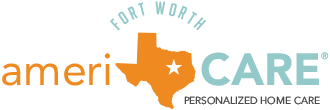The American Heart Association, in partnership with the National Forum for Heart Disease & Stroke Prevention and the Million Hearts initiative, have named May National Blood Pressure Education Month in an effort to help people understand the importance of hypertension control and heart health. Our team at ameriCARE put together a quick facts guide to help you make the most of National Blood Pressure Education Month. Follow along as we cover the key facts and get up-to-speed on best practices to keep your heart healthy!
What You Need to Know

1 – Nearly half of all adults in the United States have high blood pressure according to a 2017 study by the Center for Disease Control.

2 – Only about 1 in 4 adults (24%) with hypertension have their condition under control. (CDC)

3 – High blood pressure (hypertension) is a silent killer. You might not have visible symptoms, but it’s a leading risk factor for heart disease and stroke.

4 – High blood pressure was a primary or contributing cause of death in 2017 for more than 472,000 people in the United States. That’s nearly 1,300 deaths each day! (CDC)

5 – People with hypertension and coronary heart disease are at higher risk for developing severe illness and symptoms of COVID-19. (CDC)

What You Can Do About It

1 – Visit your doctor regularly and discuss your options if you are diagnosed with hypertension.

2 – Adhere to your medication schedule and take your hypertension medication as directed.

3 – If you have a family history of hypertension, heart disease, or stroke, or you have high cholesterol, diabetes, use tobacco products, or are obese start monitoring your blood pressure at home. Follow the American Heart Association’s at-home guide to get started!

4 – Focus on a healthful nutrition plan, add physical activity to your day, and eliminate or limit tobacco use and consumption of alcohol. Check out the CDC’s recommendations for diet and physical activity!

5 – Get enough sleep! Getting enough sleep is important to your overall help and it’s crucial to keeping your heart and blood vessels healthy. Not getting enough sleep regularly has been linked to increased risk of heart disease, high blood pressure, and stroke. (CDC)
If you or a loved one is unable to effectively manage blood pressure due to injury recovery, the effects of aging, or chronic illness, consider getting help from an in-home care professional. At ameriCARE, we can help connect you with safe, certified, and respectful caregivers in your area!


